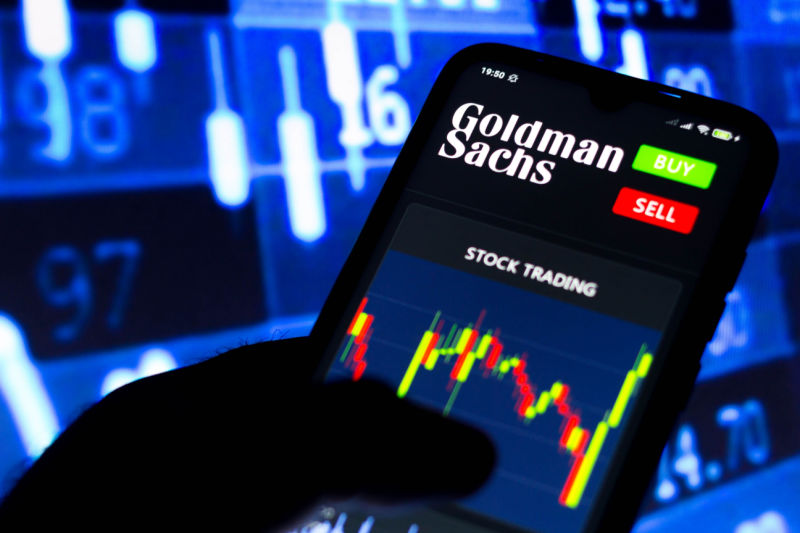By Geoffrey Smith
Investing.com -- Goldman Sachs' (NYSE:GS) earnings per share plummeted in the final quarter of the year, coming in some 40% below analysts' expectations due to a sharp drop in revenue from asset and wealth management, as well as higher credit provisions and operating costs.
The numbers put the seal on a poor year for Wall Street's blue bloods, in which rising interest rates badly hurt their ability to generate fees from merger advisory work and capital markets.
Goldman said earnings per share totaled $3.32 in the quarter, down by two-thirds from a year earlier, and well below consensus forecasts of $5.56 a share. Revenue fell slightly short of expectations at $10.59 billion, down 16% from a year earlier, as its fees from asset and wealth management fell 27%. The bank's dealmakers and bond and currency traders both generated slightly more revenue than expected, but equities sales and trading fell short of consensus.
The bank also booked charges of $972M against potential losses on its credit card and its point-of-sale loan portfolios.
Goldman Sachs stock fell as much as 2% in premarket trading in response.
"The headline numbers are obviously ugly and will create knee-jerk weakness in the stock," said analysts at Vital Knowledge in a note to clients, although they added the bank's underlying performance may have been stronger than the headlines suggest. Some of the worst developments, including the writedown of equity and debt investments in the asset management business, are unlikely to be repeated, they noted. That could also be true for the provisions, given that the bank said in October it would scale down its efforts to grow the Marcus consumer banking business.
Goldman released figures last week showing that the Platform Solutions business, into which it has transferred much of Marcus' business, lost $1.2B in the first nine months of the year, taking total losses on consumer banking since $2016 to some $3B.
The group still managed to generate more capital last year than it paid out to shareholders, leaving plenty of room for further buybacks and dividends. The standardized core tier 1 capital ratio, a key measure of financial strength, rose by 80 basis points on the quarter to 15.1%, although its in-house CET1 ratio fell 20 basis points to 14.2%.
